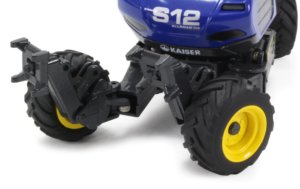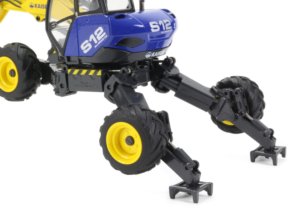
Kaiser S-12 Allroad Mobile Walking Excavator

The Kaiser Company history can be traced back to 1913 as an enterprise for agricultural vehicles, trading in tractors, spinning and weaving mills. Further development resulted in the first sewer cleaning vehicle in 1963 and by 1965; they produced their first walking excavator, the Kaiser MUK. Based in Schaanwald, Liechtenstein, the business is still family run and specialise in the development of mobile walking excavators and sewer cleaning equipment and vehicles.

The latest generation S12 Allroad sets new standards with its revolutionary electronic load-independent system (ELIS) for intelligent hydraulic control, providing maximum performance no matter what task is being undertaken. Powered by a choice of twin turbocharger Perkins diesel engines delivering 150hp or 175hp and meeting Stage IIIB / Tier 4i emissions standards, the S12 is a capable machine with a low centre of gravity allowing it to operate in the most extreme terrain. At the Bauma trade show in April 2016, the company displayed a prototype 1:50th scale model of their S12 Allroad walking excavator, so lets take a closer look

The model has certainly captured the essence of the S12 Allroad with an undercarriage that features four independently moving arms which allow both height and extension abilities and Conrad have done some fine engineering to allow a very authentic range of movement.
|
|
All four of the arms are fitted with freely rotating wheels that have independent steering control.
|
|
Two of the support arms have additional linkages with plates fitted, complete with a spiked underside which both pivot and lower into position to dig into the ground for a sturdy footing and these are also implemented well on the replica. |

The contoured body casting has indented lines for the various panels with shaped recesses for grills and the spacious cabin has a plastic interior representing the driverís seat and controls with clear glazing.

A telescopic arm is fitted to the boom to offer a greater working envelope and this slides smoothly in and out, with a number of flexible hydraulic lines fitted for realism, routed along the sides of the main boom.

The arm terminates with a coupler allowing the standard toothed digging bucket to be detached, leaving the way for additional attachments to be developed in the future. Other versions of the machine could be modelled with some small tooling changes so it wuill be interesting to see if Kaiser look to commission another mode lin the future.


